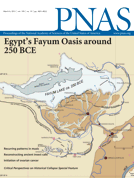导读:来自英国莱斯特大学,卡迪夫大学的科学家研究分析了一种与中风和心脏疾病相关的“生物化学开关”P2X。“这项工作也将有助于研发抑制被开启的P2X1受体的药物,从而帮助治疗中风和心脏疾病。”

来自英国莱斯特大学,卡迪夫大学的研究人员发表了题为“Agonist binding evokes extensive conformational changes in the extracellular domain of the ATP-gated human P2X1 receptor ion channel”的文章,研究分析了一种与中风和心脏疾病相关的“生物化学开关”,这将有助于了解这一开关的分子作用机制,相关成果公布在美国《国家科学院院刊》(PNAS)杂志上。
领导这一研究的是莱斯特大学Richard Evans教授,他表示,“我们首次探索这种与血液凝结有关的开关如何作用的。”
ATP是所有活细胞中能量交换的通用货币,但它也存在于细胞外,与跨膜受体发生相互作用,来影响神经细胞、肌肉、腺体和免疫细胞中的细胞内事件。P2X是ATP门控离子通道,ATP从从细胞中释放出来后,就能激活P2X受体。这项研究就针对P2X受体展开的研究。
Evans教授说,“参与血液凝结的血小板细胞会表达P2X1受体这种蛋白分子,因此阻断这种受体的药物,也许能用于减少‘危险’的血液凝结,比如中风和心脏疾病中。”
这项研究分析了P2X1受体如何被打开的,通过生物化学实验,研究人员纯化了P2X1受体,利用电子显微镜观察了这种受体,并找到了其激活时发生的变化。
结果研究人员发现,P2X1受体是由三个不同部分组成的,当被激活的时候,这三个区域就会相互扭曲,面对面。研究人员发现如果化学封闭受体,阻止这种扭曲,那么P2X1受体就不能完全被激活。
“这十分重要,因为这首次让我们从实体上认识了这些新受体如何被打开激活的过程”,Evans教授说。
“这项工作也将有助于研发抑制被开启的P2X1受体的药物,从而帮助治疗中风和心脏疾病。”
除此之外,在P2X受体家族研究方面,之前George Gorodeski博士率领的研究小组曾发现研究小组发现P2X7蛋白和mRNA分析有望成为检查子宫内膜癌变前情况的方法,证实P2X7鉴别妇女癌变前子宫内膜癌的敏感性。
研究组在最初实验室检测子宫上皮癌,包括子宫颈和子宫内膜癌时即已证明P2X7准确性和特异性,而且,因为P2X7广泛存在于肌体上皮细胞,其在其它上皮组织,有区分癌变前情况的潜力。P2X7癌症生物标记物是现今唯一能够在肿瘤发生之前区分癌变前组织的标志。

Agonist binding evokes extensive conformational changes in the extracellular domain of the ATP-gated human P2X1 receptor ion channel
Jonathan A. Roberts, Rebecca C. Allsopp, Sam El Ajouz, Catherine Vial, Ralf Schmid, Mark T. Young, and Richard J. Evans
P2X receptors for ATP have a wide range of physiological roles and comprise a structurally distinct family of ligand-gated trimeric ion channels. The crystal structure of a P2X4 receptor, in combination with mutagenesis studies, has provided a model of the intersubunit ATP-binding sites and identified an extracellular lateral portal, adjacent to the membrane, that funnels ions to the channel pore. However, little is known about the extent of ATP-induced conformational changes in the extracellular domain of the receptor. To address this issue, we have used MTSEA-biotinylation (N-Biotinoylaminoethyl methanethiosulfonate) to show ATP-sensitive accessibility of cysteine mutants at the human P2X1 receptor. Mapping these data to a P2X1 receptor homology model identifies significant conformational rearrangement. Electron microscopy of purified P2X1 receptors showed marked changes in structure on ATP binding, and introducing disulphide bonds between adjacent subunits to restrict intersubunit movements inhibited channel function. These results are consistent with agonist-induced rotation of the propeller-head domain of the receptor, sliding of adjacent subunits leading to restricted access to the upper vestibule, movement in the ion conducting lateral portals, and gating of the channel pore.
文献链接:https://www.pnas.org/content/early/2012/02/29/1201872109.short?rss=1








